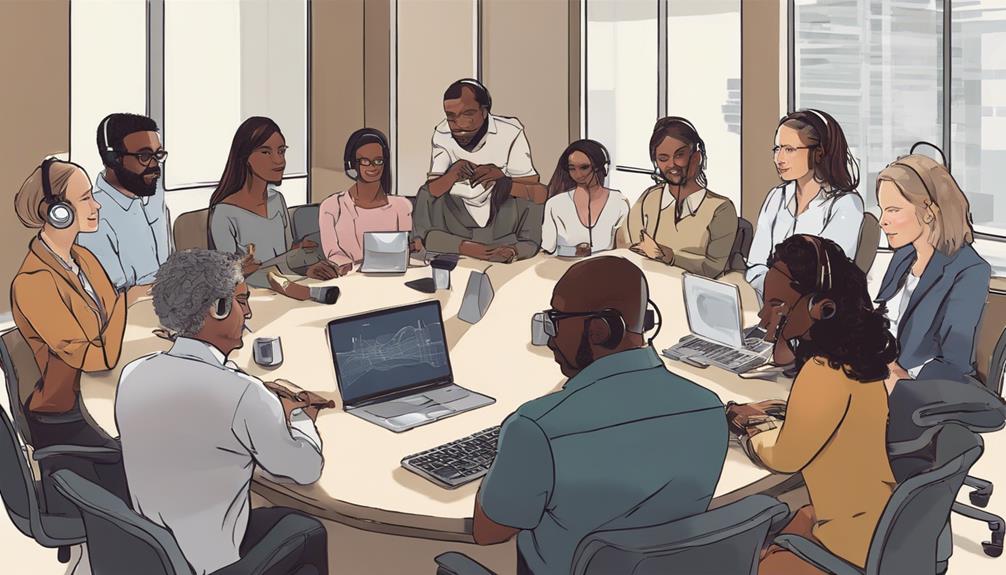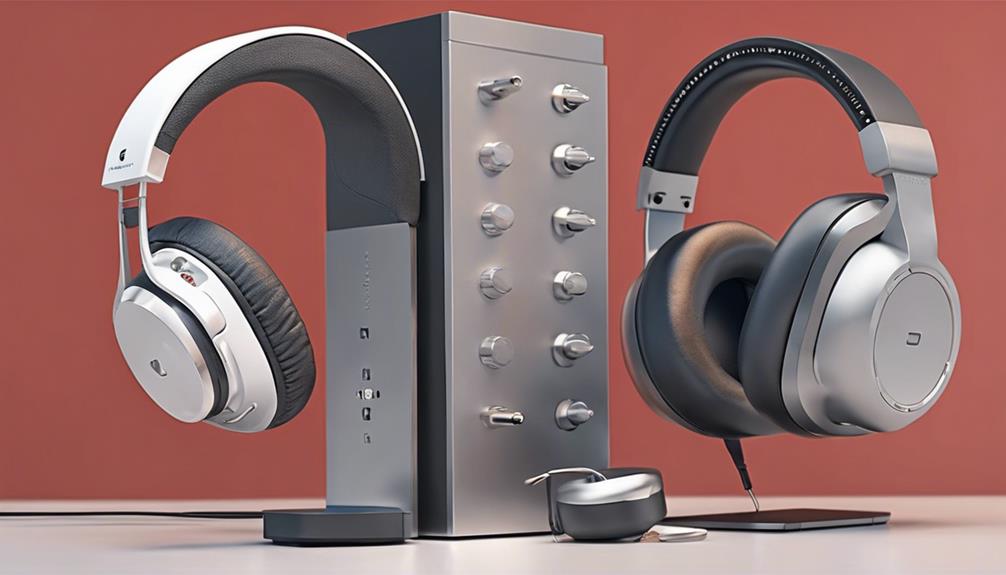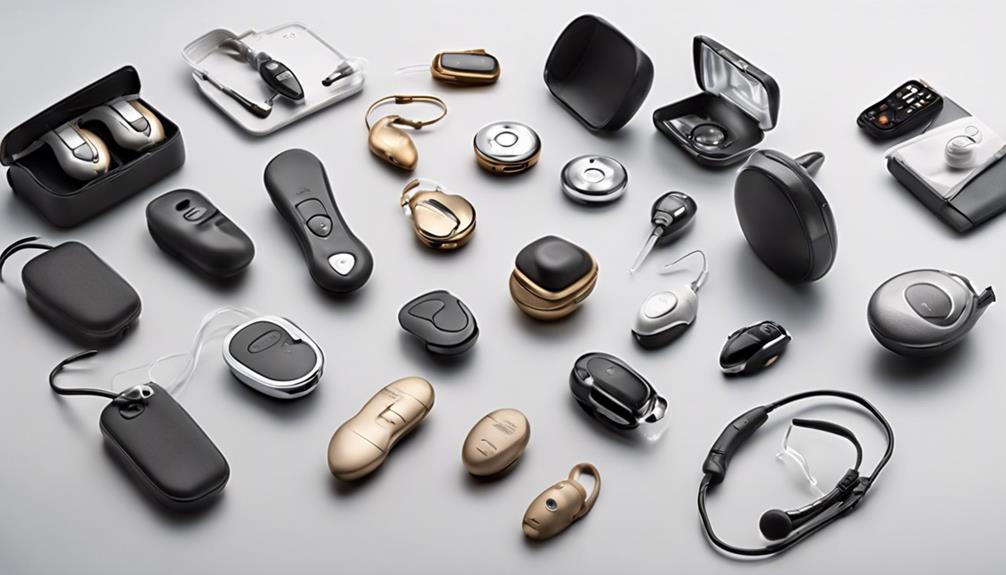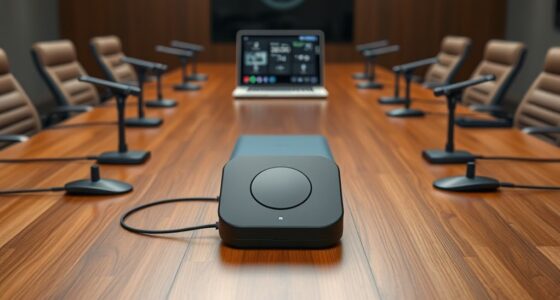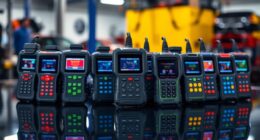In conversations, the distinction between comprehension and confusion can be determined by the clarity of sound. Assistive Listening Devices (ALDs) offer a solution that goes beyond just increasing volume.
By honing in on individual audio needs, these devices pave the way for a more seamless exchange of ideas and information. But how exactly do these devices achieve such precision in sound transmission?
Let's explore how ALDs not only enhance meetings but also revolutionize the way we communicate in group settings.
Key Takeaways
- ALDs amplify speech and reduce background noise for clear communication.
- They promote inclusivity and engagement in meetings.
- ALDs enhance sound transmission, ensuring all attendees can hear effectively.
- ALDs help overcome obstacles like distance from speakers and background noise.
Benefits of ALDs in Meetings
In meetings, the use of Assistive Listening Devices (ALDs) significantly enhances communication clarity for individuals with hearing loss. ALDs work by amplifying sound, making it easier for those with hearing impairments to follow conversations and fully engage in discussions. By enhancing sound clarity, ALDs help individuals overcome communication barriers that may exist in traditional meeting settings. This leads to more inclusive meetings where all participants, regardless of their hearing abilities, can actively contribute and feel included.
Moreover, the use of ALDs in meetings increases engagement levels among all attendees. When everyone can clearly hear and understand what's being discussed, they're more likely to participate actively and stay focused throughout the meeting. This improved comprehension also boosts productivity by ensuring that important information is effectively conveyed and retained by all participants. Ultimately, utilizing ALDs fosters a more inclusive and efficient meeting environment where communication barriers are minimized, and all individuals can contribute meaningfully to the discussion.
Overcoming Hearing Challenges With ALDs

To effectively address hearing challenges in meetings, Assistive Listening Devices (ALDs) offer a practical solution by enhancing sound transmission and overcoming obstacles like background noise and speaker distance.
ALDs, such as hearing aids and cochlear implants, play a crucial role in ensuring active participation and comprehension for all individuals in meeting rooms.
Here are some key points to consider:
- ALDs help individuals with hearing loss engage effectively in discussions and decision-making.
- These devices promote inclusivity by removing communication barriers, allowing everyone to contribute meaningfully.
- ALDs are particularly beneficial for overcoming the challenge of distance from speakers, ensuring that all attendees can hear and engage with the conversation regardless of their position in the meeting room.
Enhancing Sound Clarity in Meetings
Enhancing sound clarity in meetings is crucial for ensuring effective communication and active participation among all attendees, especially those with hearing challenges. Utilizing Assistive Listening Devices (ALDs) can significantly improve sound clarity by amplifying speech and reducing background noise. This enhancement enables all participants to hear and understand discussions clearly, regardless of their hearing abilities. By ensuring enhanced sound transmission, ALDs promote inclusivity and create a conducive environment for improved engagement and participation in meetings. Clear communication facilitated by ALDs not only fosters inclusivity but also leads to better idea exchange and decision-making processes. Ultimately, the use of ALDs in meetings results in enhanced meeting effectiveness through improved sound clarity and active involvement of all participants.
| Benefits of ALDs in Meetings | |
|---|---|
| Amplifies speech | Reduces background noise |
| Ensures clear communication | Promotes inclusivity |
| Enhances sound transmission | Improves meeting effectiveness |
Increasing Participation Through ALDs
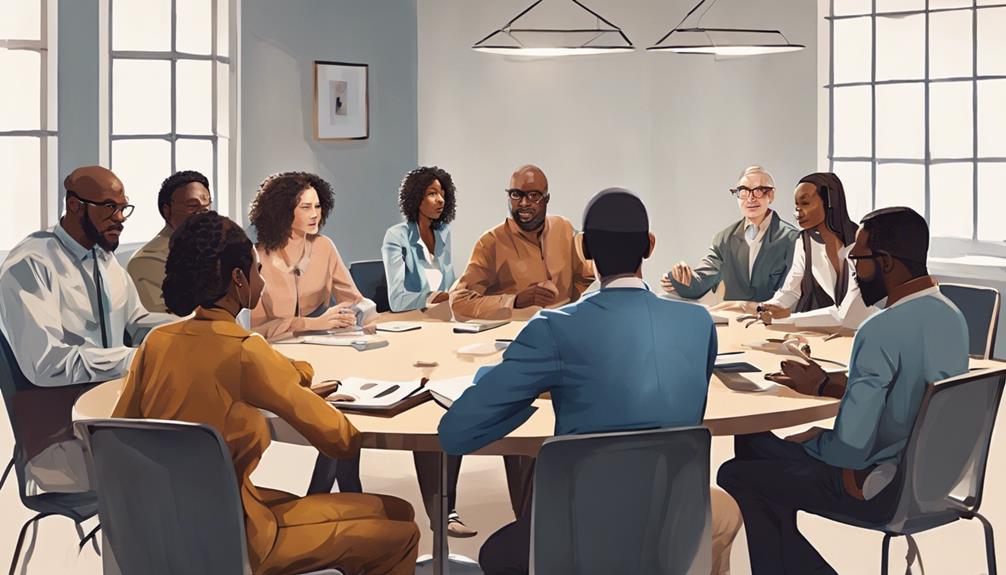
Increasing active participation in meetings can be achieved through the strategic implementation of Assistive Listening Devices (ALDs). ALDs play a crucial role in enhancing meeting participation by providing individuals with hearing loss the necessary support to engage effectively.
Here are key ways ALDs contribute to increasing participation:
- Enhancing Sound Transmission: ALDs like hearing loop systems and FM systems ensure that sound is transmitted clearly, allowing participants to follow discussions without difficulty.
- Reducing Background Noise: Telecoils integrated into ALDs help reduce background noise, enabling individuals to customize sound according to their preferences for better comprehension during meetings.
- Promoting Inclusivity: ALDs cater to different meeting settings, whether in large conference rooms or smaller group discussions, ensuring that all participants can actively engage and contribute to the conversation.
Creating Inclusive Meeting Environments
Creating inclusive meeting environments involves implementing assistive listening devices to ensure active participation for all individuals, particularly those with hearing loss. Incorporating Assistive Listening Devices (ALDs) in meetings not only aligns with accessibility standards like the AODA and the Canadian Human Rights Act but also facilitates effective communication, ensuring all participants can engage and contribute.
Accommodating individuals with hearing loss in meetings reflects a commitment to diversity and inclusivity, fostering a welcoming atmosphere that values the contributions of every attendee. By utilizing ALDs, communication barriers are removed, allowing for more meaningful interactions and idea exchanges among participants. This approach not only enhances the overall meeting experience but also demonstrates a proactive effort towards creating an environment where everyone can participate and engage fully.
Inclusive meeting environments that prioritize accessibility and effective communication benefit all participants, promoting a culture of inclusivity and collaboration.
Improving Engagement With ALDs

ALDs play a crucial role in boosting participant involvement during meetings by ensuring clear sound transmission for all attendees.
They enhance interaction and communication by reducing the barriers caused by hearing impairments, allowing for more seamless engagement in discussions.
With ALDs in place, individuals with hearing loss can actively participate, leading to more inclusive and productive meeting environments.
Boosting Participant Involvement
The utilization of assistive listening devices significantly enhances participant involvement in meetings by improving sound clarity and increasing engagement levels. ALDs play a crucial role in boosting meeting participation by breaking down communication barriers and fostering inclusivity and collaboration.
Here are key ways ALDs enhance participant involvement:
- Improved sound clarity ensures all participants can hear and understand discussions effectively.
- Increased engagement levels are observed when individuals use ALDs, leading to active participation in meetings.
- Enhanced comprehension of meeting content is facilitated through the use of ALDs, promoting better idea exchanges and decision-making processes.
Enhancing Interaction and Communication
Enhancing interaction and communication in meetings with assistive listening devices involves amplifying sound and fostering active engagement among participants. ALDs play a crucial role in improving communication for individuals with hearing loss, ensuring they can effectively follow discussions and participate in meetings.
By reducing background noise and providing clearer sound quality, ALDs help all attendees engage more actively and contribute to conversations. This technology not only breaks down communication barriers but also creates an inclusive environment where everyone can communicate with ease.
The use of ALDs enhances overall engagement and collaboration by enabling all participants to have a better understanding of the discussions taking place, ultimately leading to more productive and interactive meetings.
Revolutionizing Meeting Experiences
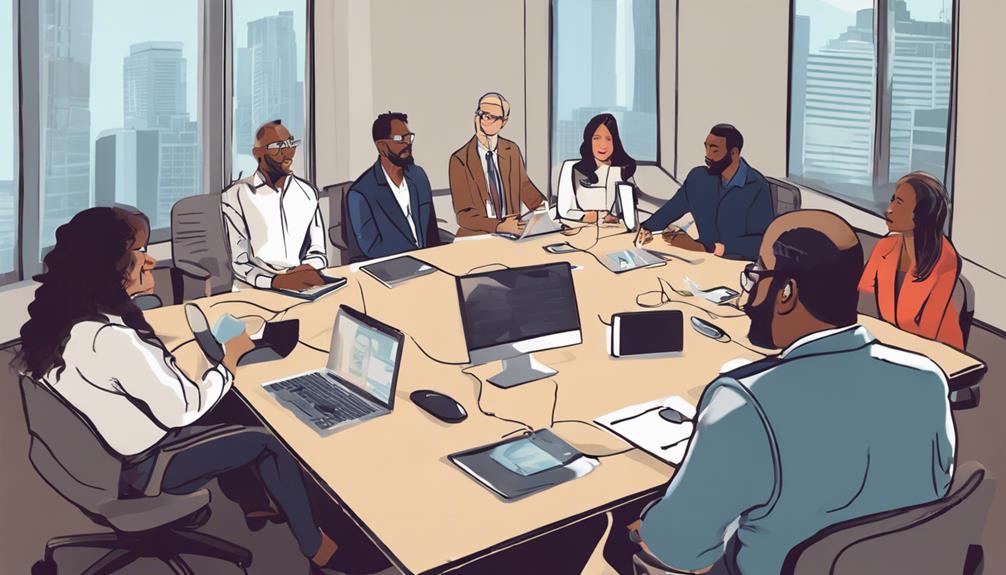
Revolutionizing meeting experiences through the integration of assistive listening devices has become a pivotal strategy in fostering inclusive and engaging communication environments. Assistive Listening Devices (ALDs) enhance meetings by improving sound transmission, clarity for individuals with hearing loss, and reducing background noise.
These devices amplify speech, boosting comprehension and participation, ensuring all attendees benefit from the meeting content. By implementing ALDs, meetings become more accessible, encouraging active engagement and collaboration among all participants.
The use of assistive listening devices promotes a more interactive and effective meeting experience, where information is conveyed clearly, leading to enhanced decision-making processes. In essence, the integration of ALDs transforms meetings into dynamic platforms where every individual can contribute meaningfully and feel included in the discussion.
Frequently Asked Questions
What Are the Benefits of Assistive Listening Devices?
The benefits of assistive listening devices include:
- Improved sound clarity
- Reduced background noise
- Enhanced speech intelligibility
- Better retention of information
- Accommodation of diverse hearing needs
These devices promote:
- Active communication
- Collaboration
- Idea exchange among participants
- Fostering a more inclusive meeting environment
By increasing comprehension and engagement, assistive listening devices play a crucial role in:
- Enhancing meeting participation
- Ensuring that all attendees can fully participate and contribute.
What Are the Assistive Listening and Communication Enhancement Technologies?
When it comes to assistive listening and communication enhancement technologies, a range of options exist to boost sound transmission and clarity. Technologies like FM, infrared, and inductive loop systems work wonders in separating speech from background noise, aiding individuals with different levels of hearing loss.
These systems encompass microphones, transmission tools, and receiving devices to amplify sound, offering a significant volume increase of 15-25 dB for improved understanding levels.
Why Is Hearing Assistive Technology Important?
Hearing assistive technology is crucial due to the prevalence of hearing difficulties among adults. Approximately 15% of American adults report some trouble hearing. This highlights the importance of assistive listening devices in improving communication and ensuring inclusivity in various settings.
With over 5% of the world's population having disabling hearing loss, assistive technology plays a vital role in creating accessible environments for effective collaboration and participation.
How Does the Device Help With Improving Hearing?
Improving hearing, the device delivers amplified sound directly into the ear, clarifying speech for those with hearing loss. By separating speech from background noise, it boosts comprehension and communication in various settings.
Research indicates a 15-25 dB volume increase is crucial for comparable understanding levels to normal hearing. Utilizing these tools empowers us to actively engage in conversations and meetings without the struggle to hear, ensuring full participation and effective contribution.
Conclusion
In conclusion, assistive listening devices have truly revolutionized the way we experience meetings. By overcoming hearing challenges, enhancing sound clarity, and increasing participation, ALDs have transformed meetings into inclusive and engaging environments.
It's ironic how a simple device can have such a profound impact on communication and collaboration. Next time you attend a meeting, remember the power of ALDs in fostering inclusivity and ensuring everyone has a voice.

